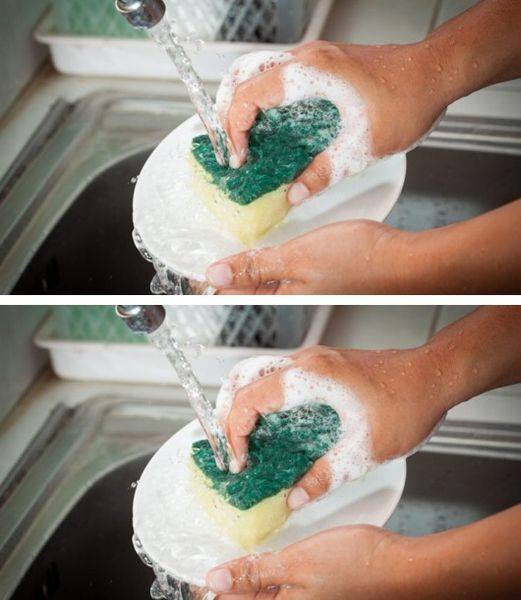ADVERTISEMENT
# **Dish Sponge: Expert Tips on How to Disinfect It and How Often You Should Replace It!**
When it comes to kitchen cleanliness, the humble dish sponge is one of the most overlooked yet essential items in the household. It helps us clean dishes, wipe surfaces, and scrub away grease, food particles, and sticky spills. However, despite being one of the most frequently used items in the kitchen, the dish sponge is often the most germ-ridden tool we own. It is constantly exposed to food residue, bacteria, and moisture—conditions that make it an ideal breeding ground for harmful microorganisms. So, how can we keep it clean and safe for use?
In this article, we’ll dive into expert tips on how to disinfect your dish sponge, the common mistakes people make with sponges, and how often you should replace them to maintain a hygienic environment in your kitchen. By the end, you’ll be equipped with the knowledge to extend the life of your dish sponge while keeping it as clean and bacteria-free as possible.
## **Why Dish Sponges Are a Breeding Ground for Bacteria**
Before we jump into cleaning and disinfecting methods, it’s important to understand why dish sponges are prone to harboring bacteria. The two main factors that contribute to this issue are:
1. **Moisture**: Dish sponges are used to soak up water and often remain wet for long periods. This constant exposure to moisture creates an ideal environment for bacteria to thrive.
2. **Food Residue**: When you use a dish sponge to clean, food particles often remain trapped within the fibers of the sponge. This organic material becomes a food source for bacteria, particularly E. coli, salmonella, and other harmful pathogens.
These bacteria can easily transfer to clean dishes, countertops, and even your hands, leading to the potential spread of illness. It’s essential to maintain a regular cleaning routine to disinfect and sanitize your dish sponge.
## **How Often Should You Replace Your Dish Sponge?**
While it’s common to assume that dish sponges last longer than they do, it’s essential to understand that they are not built for indefinite use. The average lifespan of a dish sponge varies depending on the frequency of use and the type of tasks it’s used for, but on average, a dish sponge should be replaced every **2 to 4 weeks**.
Here’s why:
1. **Worn-out Fibers**: Over time, the fibers of the sponge break down, making it less effective at cleaning. As the sponge becomes more worn out, it can harbor even more bacteria and is less likely to perform its intended function.
2. **Bacterial Build-up**: As mentioned earlier, sponges can accumulate bacteria, and over time, these harmful microorganisms multiply rapidly. Even with regular cleaning and disinfecting, a sponge may eventually become too contaminated to sanitize effectively.
3. **Unpleasant Odors**: If your sponge begins to emit an unpleasant smell, it’s a clear sign that bacteria and mold have set in. At this point, no amount of cleaning will be able to restore the sponge to its hygienic state.
For Complete Cooking STEPS Please Head On Over To Next Page Or Open button (>) and don’t forget to SHARE with your Facebook friends
